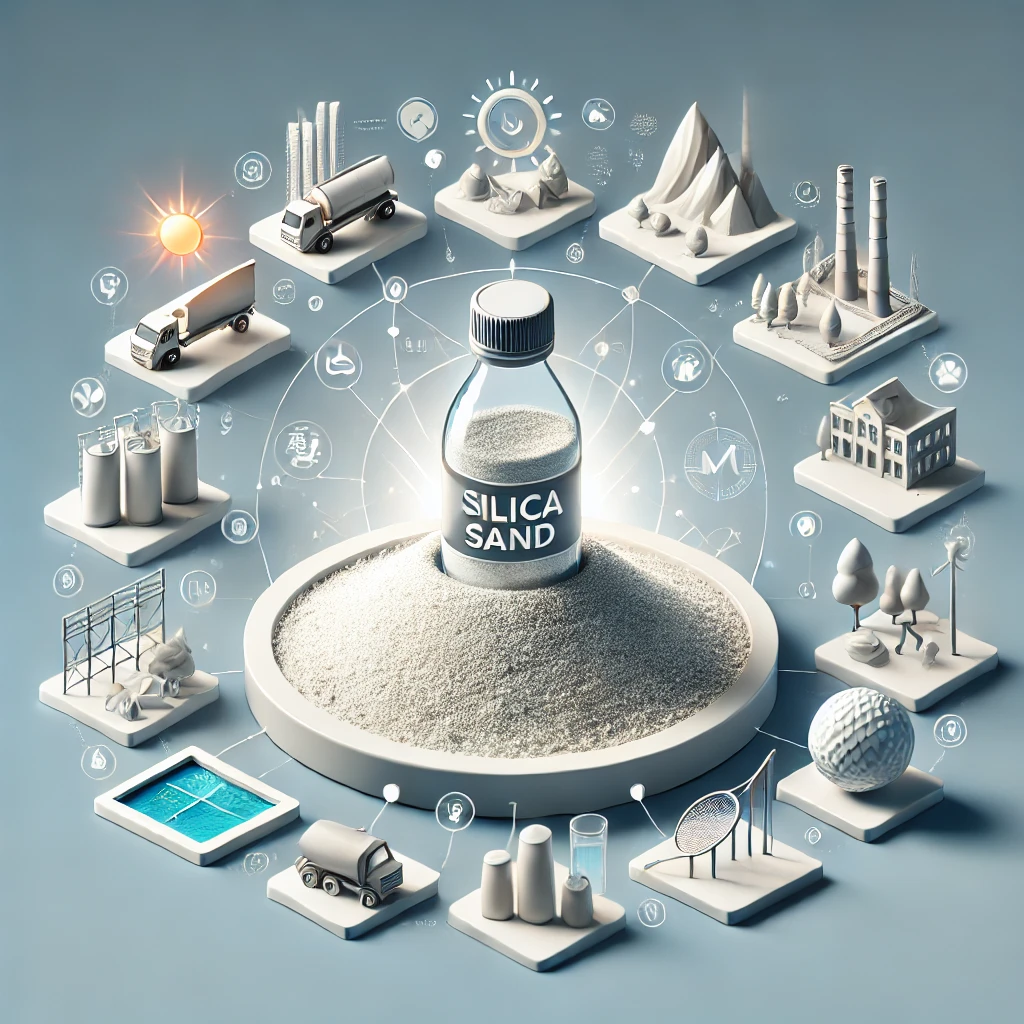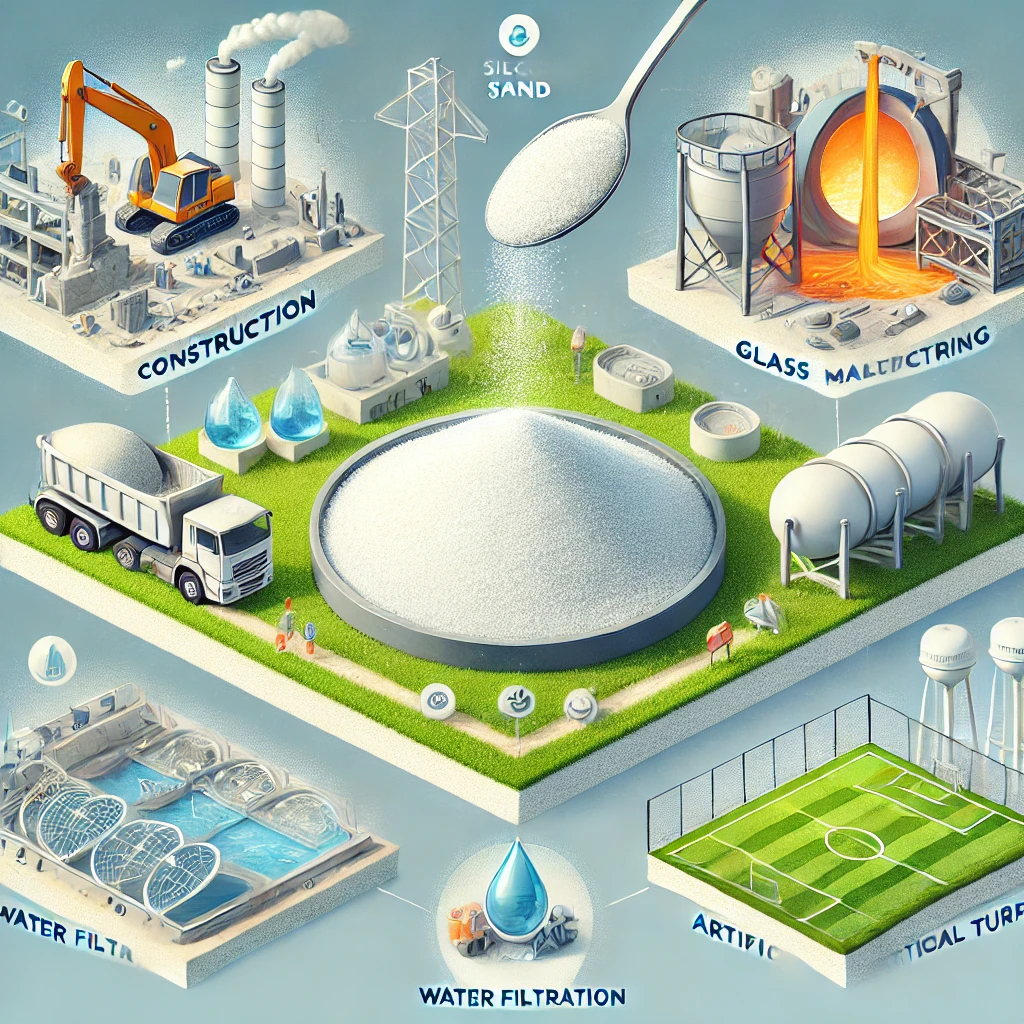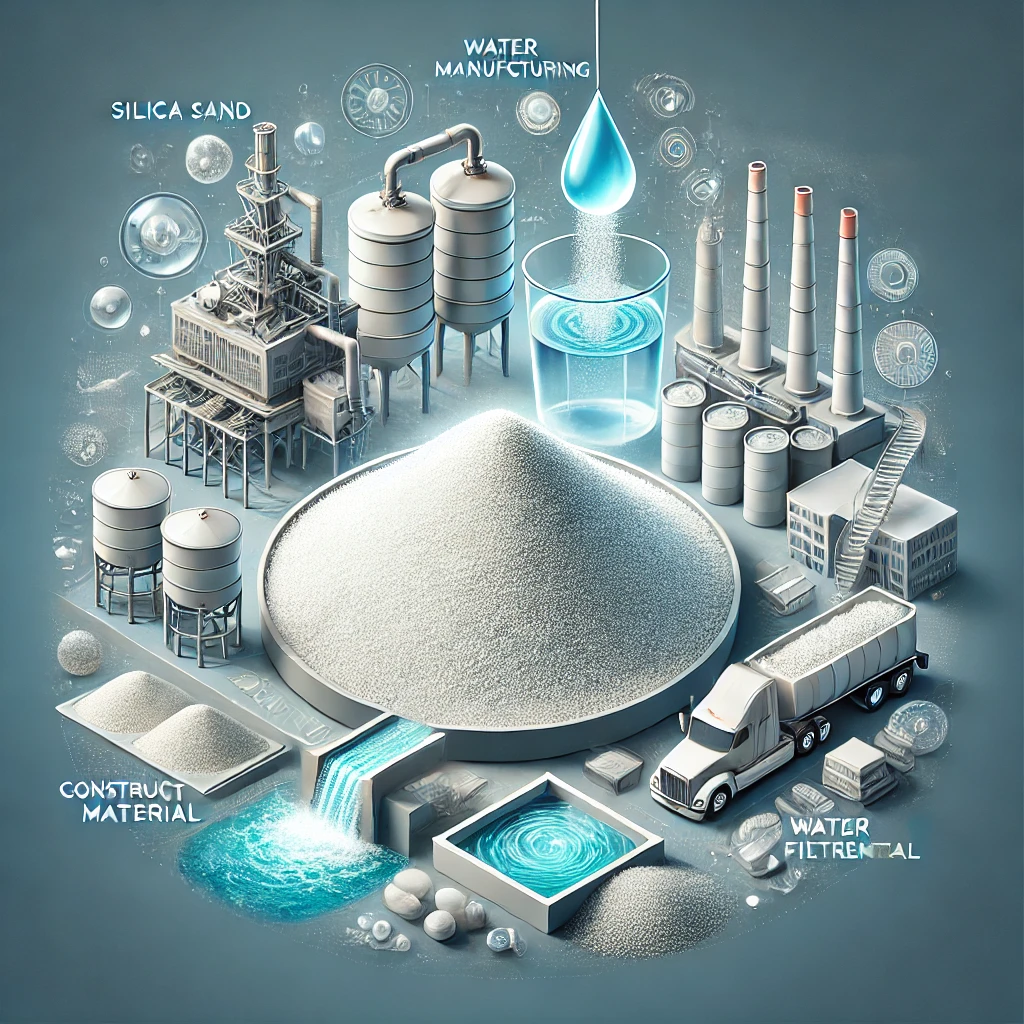Silica sand, also known as quartz sand, is a natural material that has become indispensable across a variety of industries due to its unique properties. In this article, we’ll delve into what silica sand is, its composition, and its wide range of applications. Understanding the significance of silica sand can help consumers and businesses alike make informed decisions.
What Is Silica Sand?
Silica sand is primarily composed of silicon dioxide (SiO₂), a compound found naturally in the Earth’s crust. It consists of fine granules that are predominantly quartz. High-quality silica sand is notable for its uniform grain size, high purity, and resistance to chemical and physical weathering.
Silica sand can be found in beaches, riverbeds, and dunes, but industrial-grade silica sand is typically mined from specific quarries where the purity and grain size meet stringent requirements.
Properties of Silica Sand
- High Purity: Contains over 95% silicon dioxide.
- Hardness: Durable and resistant to breaking under pressure.
- Uniform Grain Size: Ensures consistency for industrial applications.
- Chemical Stability: Inert and doesn’t react with most substances.
Common Uses of Silica Sand
Silica sand’s unique properties make it a versatile material for various applications:
1. Glassmaking
Silica sand is the primary ingredient in glass manufacturing. It is melted and molded into a range of products such as windows, bottles, and fiberglass. The high silica content ensures clarity, strength, and resistance to weathering.
2. Construction
In the construction industry, silica sand is used as a filler in concrete and mortar. It’s also an essential component in making cement. Additionally, it’s applied as a base material for paving and used in the production of high-strength building blocks.
3. Water Filtration
Thanks to its porosity and chemical stability, silica sand is widely used as a filtration medium in water treatment plants. It helps remove impurities from drinking water and wastewater.
4. Industrial Abrasives
The hardness of silica sand makes it a popular choice for sandblasting and other abrasive applications. It effectively cleans surfaces, preparing them for painting or coating.
5. Sports and Recreation
Silica sand is commonly used in golf course bunkers, sports fields, and playgrounds. Its smooth texture and consistent grain size make it ideal for such applications.
6. Horticulture
Gardeners and horticulturists use silica sand to improve soil drainage and aeration. It prevents soil compaction and promotes healthy root development.
Safety Considerations
While silica sand is a valuable material, handling it improperly can pose health risks. Inhaling fine particles of crystalline silica can lead to silicosis, a serious lung disease. To ensure safety:
- Wear appropriate respiratory protection when working with silica sand.
- Use silica sand substitutes for tasks like sandblasting.
- Follow local regulations and safety guidelines.
Final Thoughts
Silica sand plays a crucial role in industries ranging from glassmaking to water filtration. Its natural abundance and unique properties make it a versatile material. Whether you’re a business sourcing materials or a DIY enthusiast, understanding the characteristics and uses of silica sand can help you choose the right product for your needs.
If you’re looking for high-quality silica sand for industrial or personal use, consider sourcing from reputable suppliers to ensure purity and consistency. Contact us today to learn more about our silica sand offerings!



